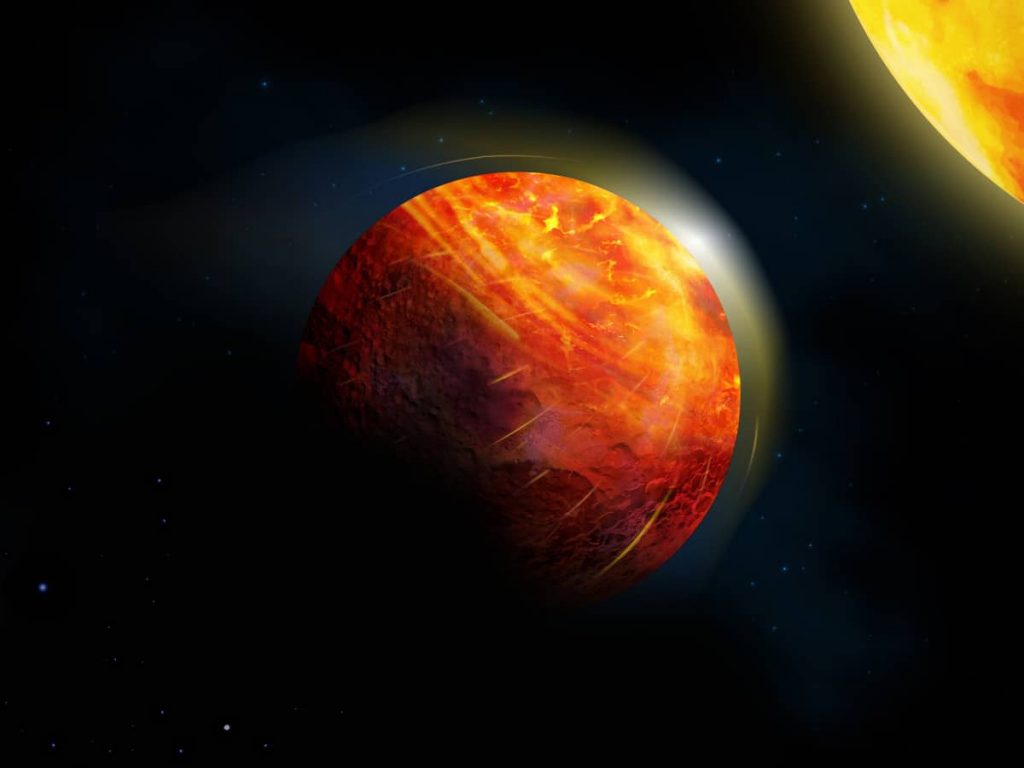
Lava planets are a class of rocky exoplanets that orbit close to their star, melting their surface parts. In fact, daytime temperatures are hot enough to handle the transport and eclipse spectroscopy, as well as the rock vapor atmosphere detectable by phase curves.
According to scientists from McGill University, University of York, And the Indian Institute of Science Education, the atmosphere and weather cycle of at least one exoplanet are also unknown, including the evaporation and precipitation of rocks, supersonic winds with speeds of more than 5000 km per hour and magma at depths of up to 100 km.
A planet K2-141b, the Earth-sized exoplanet with surface, ocean and atmosphere are all made of the same materials: rocks. Using computer simulations, scientists predicted conditions on K2-141b. Through their analysis cast extreme weather can permanently change the surface and atmosphere of K2-141b over time.
In researching the luminosity pattern of the Exoplanet, the team found that two-thirds of K2-141b experience permanent daylight – unlike the bright hemisphere we are accustomed to on Earth. Since K2-141b belongs to a subset of rocky planets orbiting very close to their star, this proximity Exoplanet Locked in place of gravity.
Speaking by Professor Nicholas Cowan of the Department of Earth & Planetary Sciences at McGill University “The night side experiences temperatures as low as -200C, at around 3000C, the daytime rocks of the exoplanet not only melt but also become hot enough to evaporate, eventually creating a thin atmosphere in some areas. . ”
Rock steam created by extreme heat causes precipitation in the atmosphere. Just like turning on the water cycle Land, Where water evaporates, rises into the atmosphere, freezes and returns as rain, so K2-141b also contains sodium, silicon monoxide and silicon dioxide. The mineral vapor formed by the evaporated rock is washed away by supersonic winds at night, and the rocks “rain” back into the magma ocean. The resulting streams flow back into the hot daylight of the Exoplanet, where the rock evaporates once more.
Scientists Observed, “The next step is to test whether these predictions are correct. We now have data from the Spitzer Space Telescope that should give them a first glimpse of the daytime and nighttime temperatures on the Exoplanet. ”
With the launch of the James Web Space Telescope in 2021, they will also confirm whether the atmosphere is behaving as it should.
Journal Reference:
- T. Jiang Nguyen et al. Atmospheric modeling of the lava planet K2-141b: implications for low and high-resolution spectroscopy. DOI: 10.1093 / mnras / staa2487
https://news.google.com/__i/rss/rd/articles/CBMiU2h0dHBzOi8vcXVlZW5zY2l0aXplbi5jYS8yMDIwLzExLzA3L3RoaXMtbGF2YS1wbGFuZXQtaGFzLXN1cGVyc29uaWMtd2luZHMtYW5kLWhhaWwv0gEA?oc=5
2020-11-07 10:44:55Z
52781166543191
Tidak ada komentar:
Posting Komentar